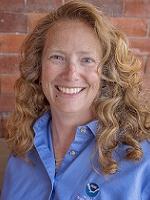



What we want the audience to walk away with:
Participants will:
1. Experience completed virtual videos through:
*watching a video lab
*engage in student facing materials (linked Google document)
*responding to a survey (linked Google form)
2. Learn how classroom teachers made videos
*have access to the procedure and materials
*learn how to choose labs, select phenomenon, develop storyboards, develop student-facing materials (formative checks, embedded resources), record and edit the video
*materials used/ accessible materials for others
3. Reflect on this process as a piece of developing and maintaining teacher-
student relationships
*Addresses absentee or virtual learning needs by providing access to something that is normally only available in person
*Mistakes not edited out and the addition of “out-takes” helps humanize teachers
• Educational or infrastructure challenge/situation:
*Carbon County School District 2 is a rural, geographically large district of ~4000 square miles in southeastern Wyoming (Nearly three times the size of Rhode Island and twice the size of Delaware). Six hundred students attend seven different schools, including several with a Title I rating of more than 30%. With a large geographic area and snowy winters, student attendance has been difficult. Since 2020 and the Covid 19 pandemic, there has been an increase in student absences for prolonged periods of time. This Wyoming Department of Education Digital Learning grant has helped to fill a need for engaging students in science labs that they miss because of attendance issues.
• Technology intervention:
* Laptops
* Sony Ⓡ cameras
* Lights
* Tripods
* Lavalier microphones
* Camtasia Ⓡ video editing software
• Lesson plans or instructional activities/strategies employed.
* Our instructional electronic resources include filmed and edited laboratory
experiences which used interactive formative assessments, accompanying Google Docs for student observations and data recording, and hosting/narration by teachers in our school district.
*Instructional strategies were based on current NGSS-aligned best practices -
including three-dimensional learning using phenomenon-based storylines.
• Evidence of success.
* Student Feedback Surveys
* Student results on formative assessments
* Student results on lab worksheets/handouts
Content and activities:
*Brief introduction to what our district did - creation of 3D phenomena-based storyline video laboratories.
*Participants will explore a lab video created by presenters while engaging with the embedded formative assessments and student-facing documents. – Individually or in small groups
*Participants will provide feedback via surveys, and debrief with presenters and each other - in small and large groups
*Participants will be introduced to storyboarding and spend time collaboratively exploring the potential for integrating this learning style into their classrooms. – In small and large
groups
Time & Processes:
*Presenters: Introduction of needs/challenges in our district (2-3 minutes)
*Presenters: Discussion of creation of videos/lessons learned (5 minutes)
*Participants: interaction with video, embedded formative assessments, and student-facing documents [small/large groups] (10 minutes)
*Participants: feedback and debriefing [presenter facilitation with small/large groups] (10 minutes)
*Presenter: Introduction to storyboarding/revisiting of phenomena throughout lab (10 minutes)
*Participants: brainstorming phenomena/storyboarding opportunities [presenter facilitation with small/large groups] (20 minutes)
Inouye, M. C., Houseal, A. K., & Gunshenan, C. I. (2020). Beyond the hook: What is a phenomenon and how is it used?. The Science Teacher 87(9), 60-63.
Inouye, M. C. & Houseal, A. K. (2019). Theory to practice: A collaborative, reflective, practical strategy supporting inservice teacher growth. Innovations in Science Teacher Education 4(1). Retrieved from https://innovations.theaste.org/theory-to-process-to-practice-a-
collaborative-reflective-practical-strategy-supporting-inservice-teacher-growth/
Houseal, A. K. (2016). A visual representation of three-dimensional learning: A model for understanding the power of the Framework for K-12 Science Education and NGSS. The Electronic Journal of Science Education, 20(9).